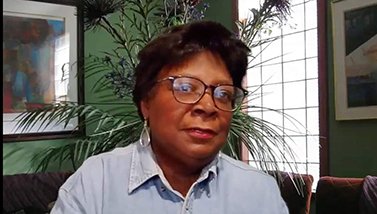Blending History And Imagination In Children’s Literature
Pam Rice discusses her artistic journey, the influence of her father’s career, her unique illustrative style, and her dedication to creating educational and engaging children’s books that celebrate diverse stories and histories.
Pam Rice, a luminary in the world of children’s literature and illustration, has carved a unique niche with her vibrant storytelling and captivat- ing visuals. With a background steeped in art and design, Rice’s journey from a childhood surrounded by creativity to a celebrated author and illustrator is nothing short of inspiring. Her work seamlessly blends artistic expression with educational narratives, offering young readers a window into diverse worlds and histories. Rice’s books, particularly those highlighting African-American adventurers, are a testament to her commitment to enriching young minds with stories that are both engaging and enlightening. Her ability to weave historical elements into compelling narratives has not only earned her numerous accolades but also a cherished place in the hearts of her readers.
In this exclusive interview for Reader’s House Magazine, Pam Rice shares insights into her creative process, the influences that have shaped her illustrious career, and her passion for inspiring the next generation of artists and storytellers. From her collaborative work with renowned artists in “The Painting Speaks” to her heartfelt portrayal of historical figures in “When The Brown Bird Flies,” Rice’s dedication to her craft shines through. Join us as we delve into the mind of a visionary who continues to leave an indelible mark on the world of children’s literature.
Your book The Painting Speaks includes contributions from internationally celebrated artists. What was the collaborative process like for this book, and how did it enrich the story of a young girl discovering her love for art?
I wanted to work with artists I was familiar with. Synthia St. James and I were showing art at the same gallery and kept in touch. I admired St. James’ work. The United States Postal Service chose one of her pieces for the first Kwanzaa stamp. Her colorful, graphic style fit the book perfectly.
For a Mazda commercial, I used a piece from Evita Tezeno’s collages in my pitch. Tezeno’s style matched the message well. The cover of ‘The Painting Speaks’ features one of Tezeno’s earlier pieces.
I sought a male artist working in pencil, and Clyde D. Lewis’ work suited this story. I asked the artists to describe their pieces briefly, which became the history lesson ‘Leslie’ learned at the gallery.
You’ve released 24 children’s books since 2015. How has your experience in advertising, graphic design, and visual communications influenced your approach to writing and illustrating children’s books?
I inherited her talent from my father. ‘The Billy Goat in The Rose Garden’ is a book I wrote and illustrated while in the second grade.
My advertising and design background gave me the skills to create self-published, professional-looking books. Early on, I focused on publications like magazines and annual reports and other fields of design. Later, I illustrated and produced books for other authors, however my strength was in visual arts more than writing.
When The Brown Bird Flies recounts the early childhood experiences of Tuskegee Airman pilot Jack Lyle. How did you approach blending historical elements with storytelling to create a narrative that is both educational and engaging for children?
Most of my stories come from childhood memories. Jack Lyle, a close friend with an interesting life, inspired this story. I told this story in a way kids would understand, using experiences they may have at the age of the character. Using real stories makes it easier to create content children can grasp.
Growing up in a family with an artist, how did your father’s career in design impact your own journey as a writer and illustrator? What specific lessons or inspirations did you draw from them?
Although I was just four when my father passed, my mother nurtured my artistic skills by teaching me to use materials, buying supplies, and enrolling me in classes and home-study courses.
Your illustrative style has developed uniquely over the years. Can you share some insights into how your style has evolved and what influences have shaped it?
I believe artists develop their style by studying others, trying different mediums, and pushing boundaries. When I have a concept for a book, I see characters, settings, textures, and backgrounds. The visuals and text grow together, with the story often told first through images; also ensuring a good story arc. The graphics and illustrations shape the book’s look and overall presentation. The illustrations do vary depending on the target age. Kids are drawn to the visuals, often focusing on images before the text.
As someone who has taught and lectured at various institutions, what advice do you give to aspiring children’s book authors and illustrators about finding their voice and developing their craft?
My inspiration comes from childhood stories and memories. My advice: make the story clear with an inspiring message; be concise (not too simple or trite) and don’t underestimate any child’s capabilities to understand; limit text per page for certain age groups; a good story arc; and budget for a good illustrator. Do not be discouraged by not immediately being accepted by a publisher; self-publishing will give satisfaction and motivation of seeing your story in print.


